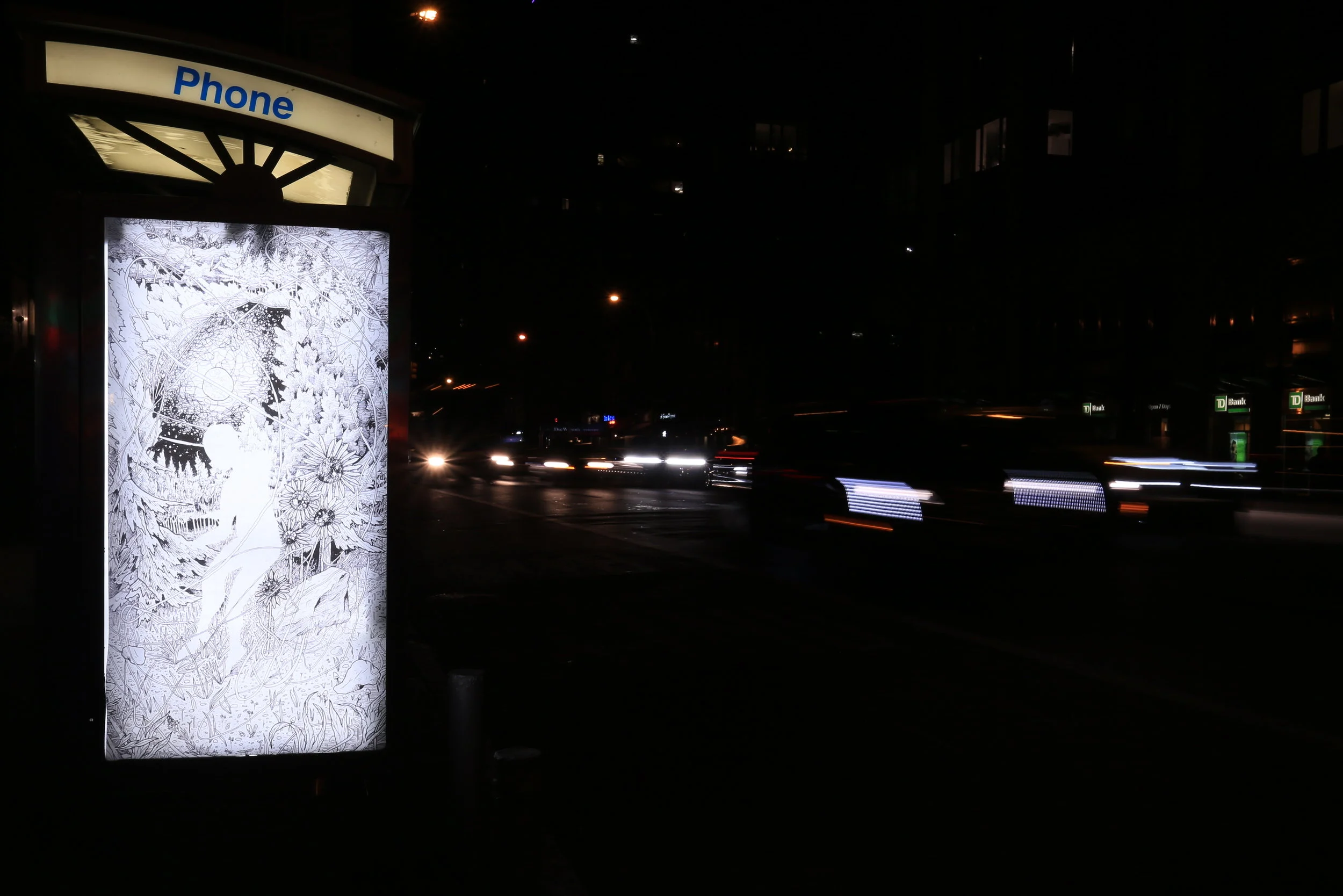Leon Reid IV. Photo by Luna Park.
How long has it been since you look at your phone? An hour? Half an hour? Half a minute? Well, you’re probably going to glance at it after seeing this poster, though Leon Reid IV would really rather that you didn’t.
He writes…
Are you sure you're in control of the tiny phone in your pocket? If so, try turning it off for 24 hours then ask yourself the same question. When you realize this is impossible, also realize that your device was designed to be this way.
As the ancient social divisions of race, gender, nationality, religion, sexual orientation and class are finally being redressed by culture at large, a new power dynamic is emerging. The internet has allowed wonderful possibilities to develop, bridging divides that once separated humankind. However, the dream of a connected world has shielded powerful social media corporations from public scrutiny as to their true motives of global power and control. I decided to participate in Art In Ad Places to bring awareness to the technological inequities as they exist now, and how it may play out in the future.
“The phones in our pockets are supercomputers designed to quantify every aspect of our lives. This once private information (data) is organized by computational power outside of our comprehension in order to move us around the world - like pawns on a chessboard- in service to maximize corporate profit.
“The corporate internet giants tout their services as a social good because they are ‘free.’ With this in mind I think about my enslaved ancestors in the American South who also had very little privacy and who were told to be grateful for the ‘free’ food and shelter they were provided.
“In order to make a phone call anywhere at any time, we've all paid much more than money. And if this is the social contract we've made with the corporate internet giants, then we need to understand every clause in this user agreement.”
We installed Leon’s work into one of the last payphones in the city, probably just a few weeks before it gets replaced by a LinkNYC tower with its multiple cameras for surveillance and two bright screens to serve you ads day and night.
As we re-enter the world after a year indoors and largely stuck on screens, we hope that Leon’s work is the jolt that gives some of us the impetus to live in the moment, away from our devices, at least for a moment.








